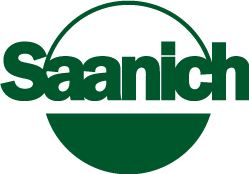Wastewater is the mix of liquid and solids flushed down toilets and drained down sinks every day. It is critical to maintain these pipes. If not, it can have a major impact on our homes, businesses and the natural environment.
Your Responsibilities
Homeowners must maintain (Sanitary Sewer Bylaw No. 8792) the sanitary sewer system to their property line (SaanichMap service). This includes:
- Servicing
- Clearing
- Rodding
- Removing blockages or tree roots
Sanitary Sewer Do’s and Don’ts
These simple Do’s and Don'ts will help you:
- Avoid significant inconvenience.
- Reduce the likelihood of blockages.
- Save money in the long run.
Do not pour fats, oils or grease down the drain
Fats, oils and grease will harden and stick to the sewer pipes. This could cause a sewer backup into your home or business.
Running hot water at the same time will not stop fats, oil and grease from sticking to the sewer pipes.
- Let fats, oils and grease begin to harden in your cookware (pots and pans).
- Use a paper towel to wipe it off and put the paper towel in your kitchen catcher as part of your Greener Garbage Collection Program.
Use your kitchen container for food waste, not the garburator.
Garburators strain our wastewater system. Put food waste into your kitchen container as part of our Greener Garbage Collection Program.
- Refer to the Organics Recycling Guide for accepted and not accepted items.
Use a strainer for your sink, tub and shower drains
Strainers are inexpensive. They also keep food, hair and other items from going down the drain and possibly clogging your pipes. Put collected items in your garbage or kitchen container instead.
Put personal hygiene items in the garbage, not the toilet
These all belong in your garbage:
- Disposable diapers
- Baby wipes — even if they say flushable or biodegradable
- Personal hygiene products
Hire a plumber to keep your system working properly
The plumber can inspect your property’s sewer line, repair any leaky plumbing fixtures like a run-on toilet and replace missing or defective cleanout caps.
It is also important to make sure that roof downspouts, foundation drains and groundwater sump pumps connect to the stormwater drainage system, not the sewer system.
Do not plant trees or shrubs or place any structures over your service connection or any registered easements.
Trees and plants like water. Their roots can grow into your service connection pipe through joints or cracks. Talk to us before placing any significant trees or structures on top of your utilities.
Property owners and residents must comply with our Sanitary Sewer Bylaw No. 8792.

